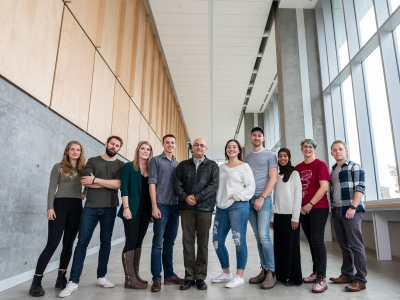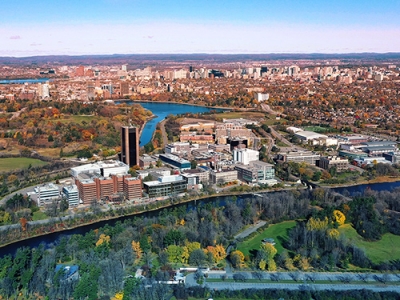By Dan Rubinstein
Photos by Gabriel Rivett-Carnac/EnviroCentre
At the Carver Place townhome community in east Ottawa, more than 60 units of rent geared to income housing for families are undergoing major energy efficiency retrofits — one of the most ambitious projects of its kind in Canadian social housing.
These upgrades — which include the installation of air source heat pumps, energy recovery ventilation systems, hot water heat pumps and new insulation as well as air sealing — aim to reduce the carbon footprint of the community while making residents more comfortable.
The pilot project is a collaboration between the Multifaith Housing Initiative, the charity that manages Carver Place, and Ottawa’s EnviroCentre, a non-profit that designs and delivers practical solutions to reduce greenhouse gas emissions. To assess the impact of these retrofits on energy efficiency and air quality, researchers from Carleton University’s Centre for Advanced Building Envelope Research (CABER) have been enlisted to set up monitoring equipment and analyze the data they collect.
“As an engineering student, my goal is to help improve people’s lives by doing work like this,” says Sara Sadeghi, a PhD student at CABER whose research focuses on energy performance. “This job can be very challenging at times, but also very rewarding.”

Carleton’s Unique Expertise
This project is unique for several reasons, foremost the fact that while some social housing providers have the resources for major energy efficiency retrofits, many organizations, including the Multifaith Housing Initiative, do not. In this case EnviroCentre serves as a bridge between planning and implementation by securing funding (via federal government grants) and bringing in partners like Carleton and other universities to gauge the technical and quality-of-life results.
It is expected that the work will not only reduce energy use and greenhouse gas emissions by 40 and 80 per cent respectively and improve the lives of locals, it will also establish a formula that other communities can follow.
Ultimately, the project will showcase “how targeted energy-efficiency measures can deliver substantial benefits for affordable housing, setting a new benchmark for future initiatives,” according to EnviroCentre.
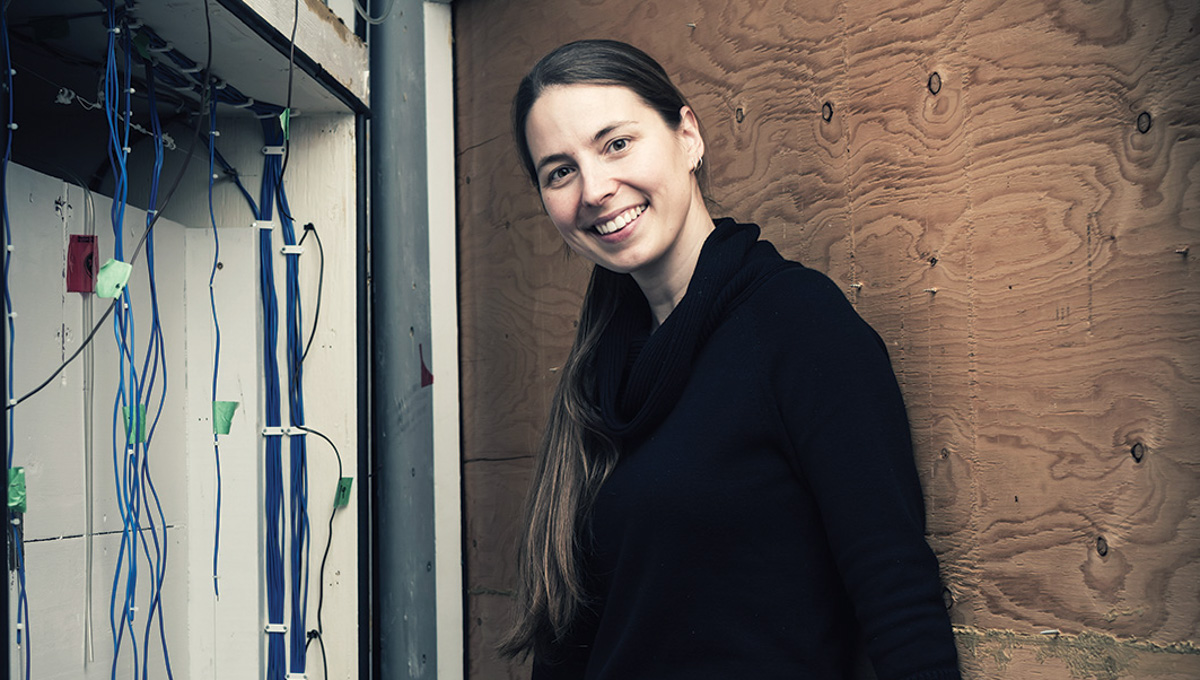
Prof. Cynthia Cruickshank
“The climate crisis demands practical, scalable solutions. In Canada, home heating and cooling are a major source of emissions, and retrofitting one house at a time just won’t cut it. We need to retrofit whole neighbourhoods. It’s complex work that takes the right expertise.”
“This project works towards making high-quality and comfortable housing available to lower-income Canadians,” says CABER director Cynthia Cruickshank, a Mechanical and Aerospace Engineering researcher at Carleton.
“Our team’s goal is to allow stakeholders to draw from the project’s results easily and accessibly in future decision-making, such that building retrofits not only minimize building energy consumption and emissions but also promote occupant comfort and well-being. In this way, we’re aiming to have a tangible socioeconomic and environmental impact across the country.”
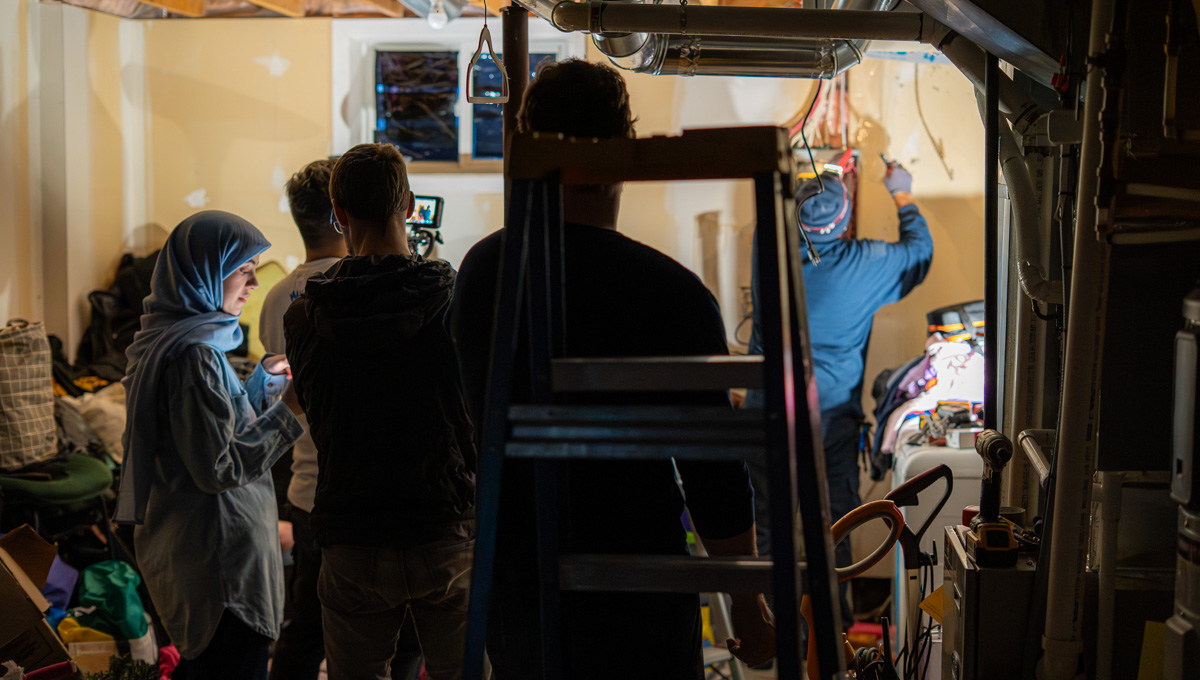
Reducing Energy Use and Emissions
The two dozen or so researchers at CABER — a group that includes grad students, faculty and staff — are accustomed to participating in projects like this.
The lab has work lined up for the next couple years, with support from funders such as the Natural Sciences and Engineering Research Council of Canada, Natural Resources Canada and the Canada Mortgage and Housing Corporation, to help reduce energy use in in residential and commercial buildings (which is currently responsible for 27 per cent of Canada’s energy consumption and 22 per cent of the country’s greenhouse gas emissions).
At Carver Place, Sadeghi and CABER postdoc Shawn Somers-Neal installed sensors in several of the units to monitor interior temperature, humidity, carbon dioxide levels and the amount of electricity being used to power the heat pump, water heater and other systems.
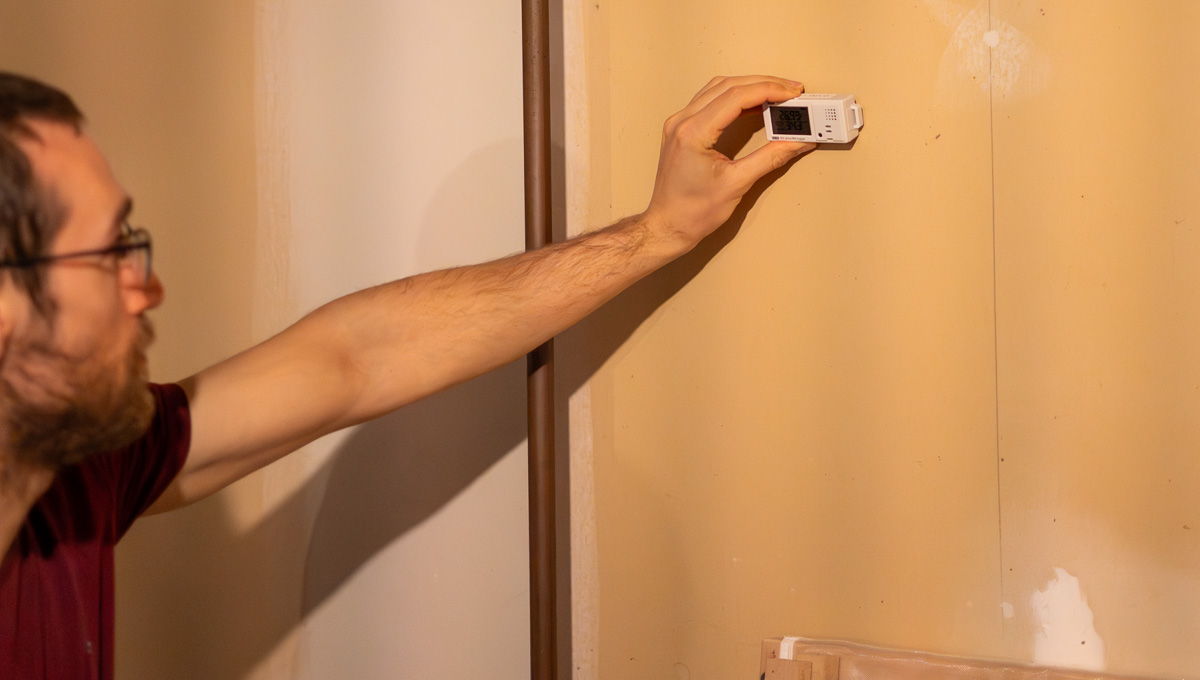
Carleton postdoc Shawn Somers-Neal installs a sensor as part of the Carver Place energy efficiency retrofit project.
Sadeghi developed an energy model of the townhomes before the retrofits began and simulated their post-upgrade performance but needs to calibrate her model with real-world data, accounting for variables such as the size of each unit and occupant behaviour.
Early results suggest that the air sealing has been effective, she says, reducing energy loss through the building envelope. This will lead to lower greenhouse gas emissions and lower bills for tenants, who now have more comfortable air-conditioned homes thanks to the dual-purpose heat pumps.
“Some data can be predicted by our software, but we need to take actual measurements to see how effective these retrofits really are,” says Sadeghi, who will be watching the monthly data downloads closely for the next year and a half. “We need to understand the gaps between our simulation and the actual building performance with people living in these units to help us refine our models.”
“Working with CABER on monitoring the post-retrofit work will be invaluable for us as we look to accelerate the retrofitting of social housing units across Eastern Ontario,” says Melanie Johnston, EnviroCentre’s Director of Energy Programs. “It’s an exciting project and a great example of climate solutions being put to work on the ground here in Ottawa.”
Wednesday, August 6, 2025 in Environment and Sustainability, Faculty of Engineering and Design
Share: Twitter, Facebook
